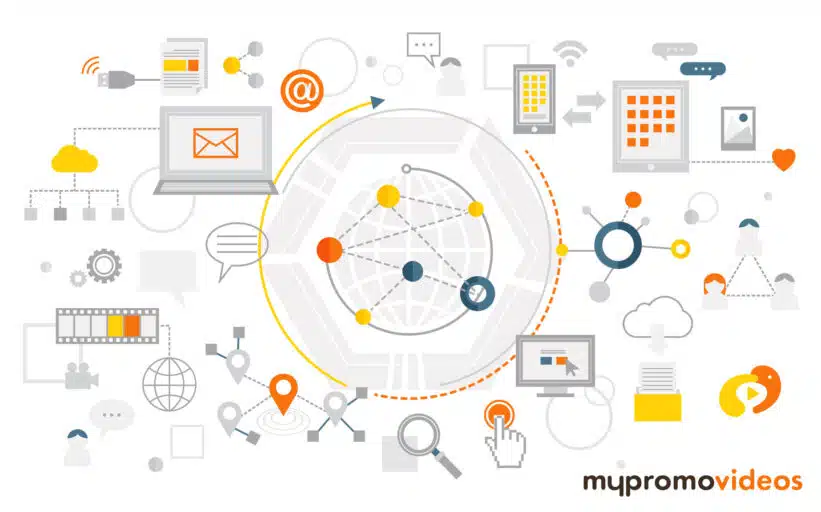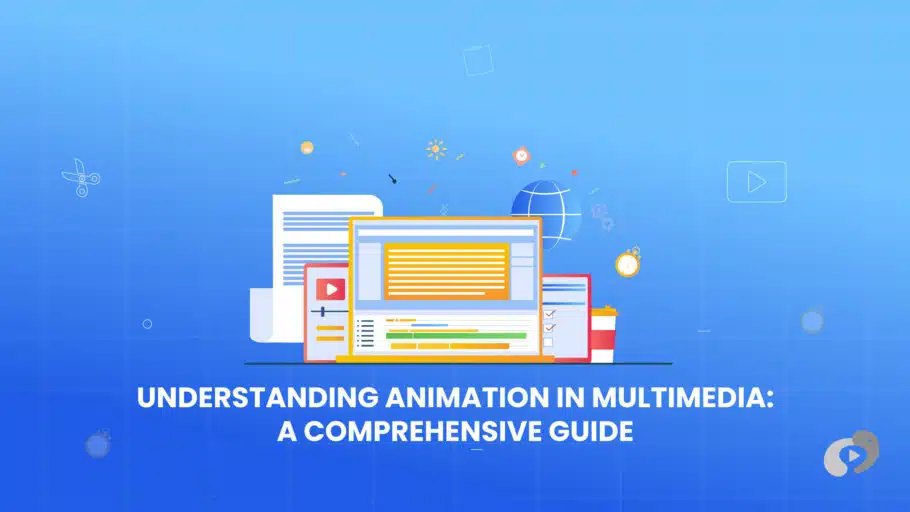Last Updated on November 5, 2024
Article Contents
Animation in Multimedia
Animation has become essential in multimedia, shaping the way we consume, learn, and interact with information. From feature films to educational content, it enriches media by providing visual dynamics that static elements can’t offer. This guide delves into multimedia and animation, covering the basics, types, applications, and future trends. Understanding what is multimedia and animation is foundational to unlocking the full potential of digital content.
What is Multimedia and Animation?
Multimedia refers to the use of various media types—such as text, images, sound, video, and animation—to convey information in an engaging way. It’s commonly used in advertising, entertainment, education, and more to captivate audiences and simplify complex information. Multimedia can be interactive (such as websites and e-learning courses) or linear (such as videos and presentations), providing endless possibilities for content creators.

Animation, meanwhile, is the art of creating moving visuals through a sequence of still images. Each frame is slightly different from the last, creating the illusion of movement. In the context of multimedia, animation isn’t just about making things move; it’s about enhancing the audience’s understanding and engagement with the content. Together,it provides a powerful way to deliver information interactively, visually, and memorably.
What is Animation in Multimedia
Animation in multimedia is about more than just visuals; it’s an interactive tool that makes digital experiences richer and more engaging. Animation can be applied to graphics, text, or entire video sequences to improve storytelling and guide the viewer’s attention. To define it, consider it a tool that brings life to digital elements, making them part of an interactive, cohesive presentation that enhances the viewer’s overall experience.
Understanding Animation in Multimedia
Animation in multimedia projects serves several purposes:
- Storytelling: Animation can help tell complex stories by simplifying elements and focusing on key ideas, making the content easier to understand and more enjoyable to watch.
- Educational Support: Animation explains complex concepts visually, breaking down abstract or technical information in ways that make it accessible to broader audiences.
- User Engagement: Movement naturally attracts attention, and animation can keep viewers engaged, especially when integrated with interactive elements.
By helping viewers absorb information visually, animation plays an essential role in multimedia, improving both comprehension and retention.
Types of Animation in Multimedia
Different types of animation can be used in multimedia, each serving unique purposes. Here are the primary types:
2D Animation
2D animation is the traditional form of animation, where characters, objects, and scenes are designed on a flat, two-dimensional plane. Commonly seen in cartoons, explainer videos, and educational content, 2D animation is known for its simplicity and timeless style. It’s created by sequencing drawings in rapid succession, and it’s widely used in multimedia because of its accessibility and affordability compared to 3D animation.
3D Animation
3D animation involves creating characters and objects in three-dimensional space, giving them depth and realism. Unlike 2D animation, 3D animation can be rotated, scaled, and moved in multiple directions, making it ideal for immersive experiences. 3D animation is often used in movies, video games, and product visualizations, adding a lifelike quality that enhances the viewer’s experience.
Stop Motion Animation
Stop motion animation is created by physically manipulating objects in small increments, capturing each movement frame by frame. When played in sequence, these frames create the illusion of movement. Stop motion animation has a unique, tactile quality, often using clay figures, puppets, or everyday objects, making it stand out in the multimedia landscape. It’s frequently used in films and commercials to create a distinct, hands-on effect.
Applications of Animation in Multimedia
Animation in multimedia is incredibly versatile, with applications across various fields. Here’s how animation is used in different industries:
Entertainment Industry (Movies, Video Games)
In the entertainment industry, animation has revolutionized storytelling. Animation allows for the creation of fictional worlds, characters, and situations that go beyond live-action’s capabilities. It plays a foundational role in movies, TV shows, and video games, where it’s used to create immersive experiences. Studios like Pixar, DreamWorks, and Marvel have utilized multimedia and animation to captivate audiences globally, creating memorable stories and worlds.
Education (E-learning tools)
In education, animation is invaluable for simplifying and visualizing complex topics. It’s widely used in e-learning tools, where animated infographics, explainer videos, and interactive simulations make learning more engaging. For example, animated biology tutorials can visualize how cells work, while math animations explain abstract concepts like fractions. Animation in multimedia education is essential because it helps learners retain information and remain engaged.
Advertising (Commercials and Explainer Videos)
Animation in advertising allows brands to communicate their messages creatively. Animated commercials and explainer videos are visually engaging and can convey key messages within seconds. In addition, animation makes it easier to break down product features, services, or processes in a format that’s fun and memorable. From animated logos to full commercials, animation in advertising has proven to be a powerful storytelling tool, helping brands stand out in competitive markets.
Importance of Animation in Multimedia
Animation is more than an aesthetic choice; it has significant functional benefits that make it indispensable in multimedia. Here are some key reasons why animation is essential:
- Enhances Viewer Engagement: Movement captures attention and keeps viewers focused on the content, making animation a powerful tool for maintaining engagement.
- Improves Information Retention: Visuals with movement enhance memory recall, which is why animated explanations are more effective than static text for complex information.
- Simplifies Complexity: Animation can turn complex concepts into simple visuals, making it ideal for educational or instructional content.
- Versatility and Adaptability: Animation can be tailored to any style, mood, or message, from professional infographics to playful cartoons.
Animation makes multimedia more effective by increasing its emotional and informational impact, making it easier for audiences to absorb and respond to the content.
Future of Animation in Multimedia
The future of animation in multimedia is full of potential, with technology continuing to evolve. Here are some key trends to watch:
- Virtual Reality (VR) and Augmented Reality (AR): Animation in VR and AR allows for interactive, immersive experiences, where users can engage directly with animated objects and environments. This trend is expected to grow as VR and AR technology become more accessible, opening up new possibilities in education, training, and entertainment.
- AI-Powered Animation: Artificial intelligence is making animation creation more accessible, with tools that automate parts of the animation process. AI can assist in tasks like character rigging, lip-syncing, and generating facial expressions, allowing animators to produce content faster without sacrificing quality.
- Interactive Animation: Interactive animation lets viewers engage with animated content directly, creating a personalized experience. This trend is particularly relevant in multimedia applications like e-learning, where users can control animations to explore topics at their own pace.
The future will likely bring new ways for animation to interact with other media elements, offering richer, more immersive multimedia experiences that cater to diverse audiences and purposes.
Conclusion
Animation has become a cornerstone of multimedia and animation design, revolutionizing how we communicate, learn, and entertain. From e-learning tools to blockbuster movies, animation enhances multimedia by making content more engaging, accessible, and memorable. By understanding what is multimedia and animation, you can better appreciate how animation transforms digital content into dynamic, interactive experiences that resonate with viewers.
As technology continues to advance, the future of animation in multimedia looks brighter than ever, with innovations like AI, VR, and interactive animation leading the way. Whether for education, entertainment, or advertising, animation will remain a fundamental element in multimedia, pushing creative boundaries and enabling impactful storytelling across all platforms.

